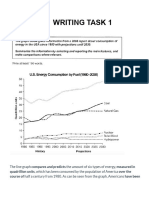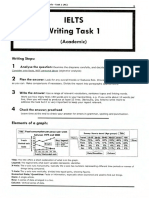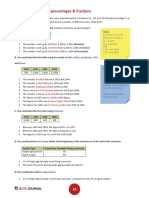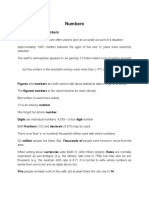0% found this document useful (0 votes)
112 views34 pagesVerbalizing Data-Interpreting Graphs and Tabels
The document provides information about interpreting graphs and tables, including defining what they are, how to interpret them, and useful expressions for describing trends and relationships shown in graphs and tables. It gives an example of a line graph showing population growth in Indonesia from 1930 to 2000, and an example table showing TOEFL scores of students from a university.
Uploaded by
Nazmi FathonahCopyright
© © All Rights Reserved
We take content rights seriously. If you suspect this is your content, claim it here.
Available Formats
Download as PDF, TXT or read online on Scribd
0% found this document useful (0 votes)
112 views34 pagesVerbalizing Data-Interpreting Graphs and Tabels
The document provides information about interpreting graphs and tables, including defining what they are, how to interpret them, and useful expressions for describing trends and relationships shown in graphs and tables. It gives an example of a line graph showing population growth in Indonesia from 1930 to 2000, and an example table showing TOEFL scores of students from a university.
Uploaded by
Nazmi FathonahCopyright
© © All Rights Reserved
We take content rights seriously. If you suspect this is your content, claim it here.
Available Formats
Download as PDF, TXT or read online on Scribd
/ 34
























































































